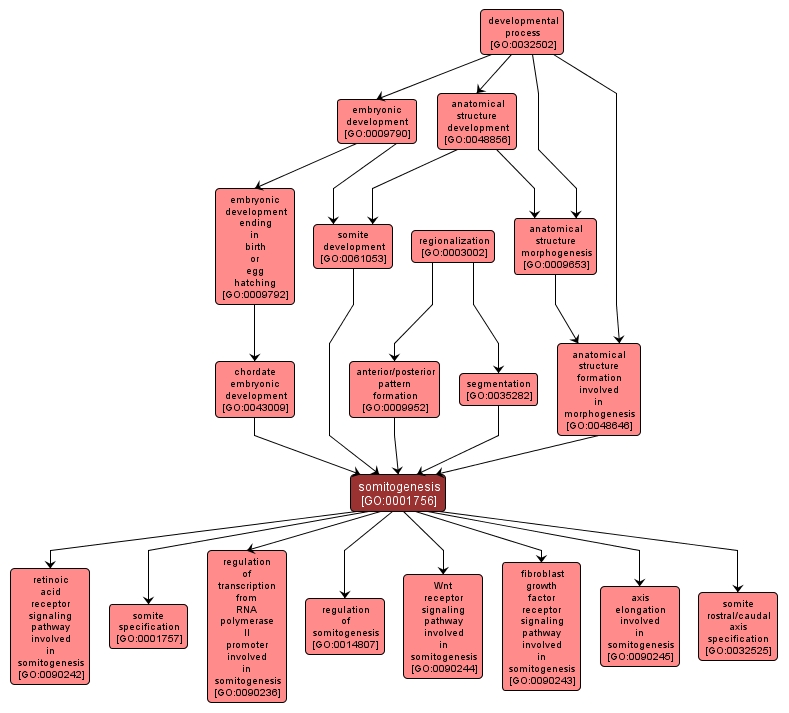GO TERM SUMMARY
|
| Name: |
somitogenesis |
| Acc: |
GO:0001756 |
| Aspect: |
Biological Process |
| Desc: |
The formation of mesodermal clusters that are arranged segmentally along the anterior posterior axis of an embryo. |
Synonyms:
- formation of mesodermal clusters
|
|

|
INTERACTIVE GO GRAPH
|














